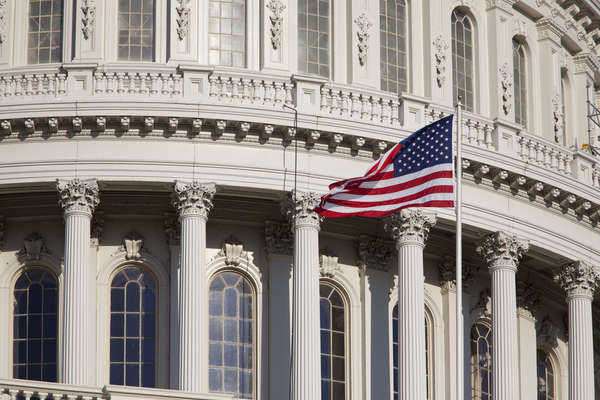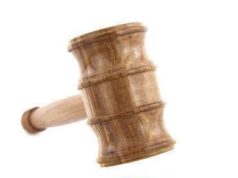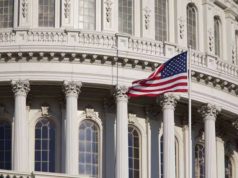Table of Contents

Introduction
The Supreme Court of the United States (SCOTUS) is the highest federal court in the country and an essential pillar in the American legal system. Its decisions have profound impacts on US law, politics, and society. Hence, understanding the importance of the Supreme Court’s verdicts is crucial for everyone, whether legal professionals, politicians, or ordinary citizens.
In this article, we’ll delve into the significance of Supreme Court decisions in shaping the US legal system and political landscape. We’ll also examine a landmark Supreme Court case, Roe v. Wade, as a case study to illustrate the court’s impact on individual rights, social change, and political polarization.
What Is The Supreme Court?
The Supreme Court of the United States is a federal court, established by Article III of the US Constitution. It’s composed of nine justices appointed by the President and confirmed by the Senate. The Chief Justice of the United States is the head of the Supreme Court, while the other eight justices are Associate Justices.
The Supreme Court has both an appellate jurisdiction, hearing appeals from lower courts, and an original jurisdiction, meaning it can hear cases for the first time. The majority of cases brought before the court are appeals rather than original cases.
Why Are Supreme Court Decisions So Important?
The Supreme Court’s decisions are essential because they interpret the law and set precedents that lower courts, and even other branches of the government, must follow. In other words, the Supreme Court shapes the US legal system, determines the constitutionality of laws and government actions, and safeguards individual rights and liberties.
Moreover, the Supreme Court has the power of judicial review, meaning it can declare acts of Congress or the executive branch unconstitutional and strike them down. This power has allowed the Supreme Court to serve as a check on the other two branches of the government and ensure that they don’t exceed their constitutional limits.
Ten Important Facts About Roe v. Wade
Roe v. Wade is arguably the most recognizable case in the Supreme Court’s history. It was a landmark decision that legalized abortion nationwide, and it remains one of the most controversial court rulings of all time. Here are ten essential facts about Roe v. Wade:
- The case was brought before the Supreme Court by a Texas woman named Norma McCorvey, who went by the pseudonym “Jane Roe” to protect her privacy.
- McCorvey was pregnant and wanted to have an abortion, but Texas law prohibited abortions with the exception of saving the mother’s life.
- The case was decided in 1973, during the Supreme Court’s Warren Burger era. Chief Justice Warren Burger was appointed by President Richard Nixon in 1969.
- The nine justices on the Supreme Court were split on the decision, with seven in favor of Roe and two against.
- Justice Harry Blackmun wrote the majority opinion, which was joined by six other justices. The opinion held that a woman’s constitutional right to privacy included the right to make her own decisions about abortion.
- The decision also established a three-part framework for evaluating abortion laws, with states allowed to regulate abortion only after viability, meaning when the fetus could survive outside the womb, except in cases where the mother’s life or health was at risk.
- The dissenting opinions were written by Justice William Rehnquist and Justice Byron White.
- Roe v. Wade generated intense public controversy and sparked a contentious political and legal debate that continues to this day.
- The decision has faced numerous challenges over the years, with opponents seeking to overturn it or limit its scope.
- Roe v. Wade is widely regarded as a seminal moment in the history of reproductive rights, gender equality, and individual freedom.
Impact of Supreme Court Decisions on US Politics
One of the most significant impacts of Supreme Court decisions on US politics is the role the court plays in shaping partisan debates and ideologies. Supreme Court decisions often align with one political party or another, and as such, they can exacerbate political polarization and fuel culture wars.
For instance, Roe v. Wade has been a lightning rod for political controversy since its issuance in 1973. Even today, forty-eight years later, politicians, activists, and interest groups still frame their positions on abortion rights based on their stances on Roe.
The court’s decisions can also have a profound impact on presidential elections. Candidates often discuss their plans for appointing justices and how they would handle prominent constitutional issues. For example, former President Donald Trump campaigned on a promise to appoint conservative judges who would overturn Roe v. Wade, while President Joe Biden pledged to defend and codify the landmark ruling.
The way Supreme Court decisions impact US politics is also reflected in the confirmation process. Senate confirmation hearings for Supreme Court nominees, like Brett Kavanaugh and Amy Coney Barrett under the Trump administration and Merrick Garland under the Obama administration, have become prolific battlegrounds for the political parties. The ideological leanings of nominees and the potential impact of their confirmation on the court’s balance is closely scrutinized in the media and serves as a crucial issue in Senate elections.
Impact of Supreme Court Decisions on US Legal System
Supreme Court decisions are instrumental in shaping the American legal system, as they establish precedents that lower courts are bound to follow. A Supreme Court decision is final, and once it has been made, it is challenging to overturn.
For example, Brown v. Board of Education of Topeka, the landmark 1954 case that declared segregation in public schools unconstitutional, was a significant factor in shaping desegregation policies and laws throughout the country. The decision paved the way for the dismantling of Jim Crow laws and the integration of schools, housing, and other public accommodations.
Similarly, the Supreme Court’s decision in Miranda v. Arizona in 1966 established the now-famous “Miranda rights” that police officers must read to suspects upon arrest. The Miranda decision is still cited today in prosecuting criminal cases and ensuring due process for defendants.
Moreover, Supreme Court decisions often interpret the Constitution and its amendments, clarifying the meaning of the law and ensuring the proper balance of power between branches of government and protection of individual rights. Decisions such as Marbury v. Madison, McCulloch v. Maryland, and United States v. Nixon all established or reinforced the crucial principles of judicial review, federalism, and separation of powers.
Conclusion
The Supreme Court of the United States has a profound and far-reaching impact on US law, politics, and society. Its decisions establish precedents, interpret the Constitution, and check the power of other branches of the government. Supreme Court cases have shaped the American legal system, paved the way for social change, and contributed to political polarization and partisanship. As such, understanding the importance of Supreme Court decisions is essential for anyone interested in American politics, law, and the larger social issues that affect us all.
The highest judicial body within the United States, the Supreme Court of the United States, consists of one Chief Justice and eight Associate Justices. The Justices are nominated by the President and the Senate votes them into the office to serve for a lifetime tenure until the justice retires, resigns, is impeached, or dies.
Initially, the Supreme Court heard very few cases, with the first Supreme Court case heard in the case of West v. Barnes, which found that a writ of error is required to be issued within ten days by the Clerk of the Supreme Court. When John Marshall took the seat of Chief Justice, however, the power of the Supreme Court began to grow. The Marshall Court which lasted from 1801 to 1835. Martin v. Hunter’s Lessee gave the Court the power to correct the interpretations of the U.S. Constitution which have been established by State governments.
The Supreme Court was then entrusted with not only the power to interpret the law but to strike down any laws which it deemed unconstitutional. The responsibility to make important decisions also came with a great deal of criticism. The enumeration in the Constitution, of certain rights, “shall not be construed to deny or disparage others retained by the people.” It is designed to negate any further expansion of governmental power on account of the enumerated rights mentioned in prior Amendments of the Constitution.
Further protection for individual rights was given in the Fourteenth Amendment of the U.S. Constitution, which was added after the end of the U.S. Civil War as one of the Reconstruction Amendments in 1868. The Fourteenth Amendment covers a lot of ground in its five total sections. Section 1 stated that all persons born within the United States are citizens of The United States and citizens of the State in which they reside.
Other provisions in the Amendment include rights for voting, restrictions on governmental jobs of members of Congress, the voiding of all debts relating to slavery, and that Congress had the power to enforce all of the above provisions. The provisions clearly outlined in the Ninth and Fourteenth Amendment has been interpreted in controversial ways by the United State Supreme Court.




















